Population demographics play a vital role in understanding the dynamics of society.
By examining various factors such as age, gender, ethnicity, and socioeconomic status, demographic reports provide valuable insights into the composition and trends within a population. In this post, we will delve into the significance of population demographic reports, explore the use of maps in visualizing demographic data, and discuss the broader implications of understanding population demographics.
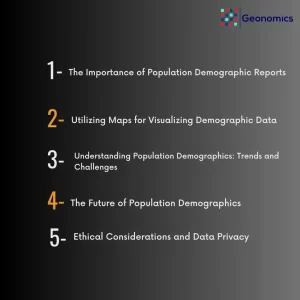
1. The Importance of Population Demographic Reports:
Population demographic reports serve as valuable tools for policymakers, researchers, and businesses to make informed decisions. By analyzing demographic data, these reports offer a comprehensive understanding of a population’s characteristics and behavior. Here are a few key reasons why population demographic reports are crucial:
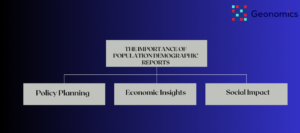
- Policy Planning: Governments rely on demographic reports to formulate policies related to healthcare, education, infrastructure, and social welfare. By identifying demographic trends such as aging populations or shifts in ethnic composition, policymakers can allocate resources more effectively and address the specific needs of different groups.
- Economic Insights: Demographic reports provide valuable insights for businesses to identify potential markets, consumer preferences, and investment opportunities. By understanding the age distribution, income levels, and consumption patterns within a population, companies can tailor their strategies accordingly and enhance their competitiveness.
- Social Impact: Demographic reports enable researchers to study social issues such as poverty, inequality, and migration. By examining demographic factors, researchers can identify vulnerable populations and design interventions to address their specific needs.
-
Utilizing Maps for Visualizing Demographic Data:
Maps offer a powerful tool for visualizing population demographic reports, allowing for a clearer understanding of spatial patterns and distribution. Geographic Information Systems (GIS) and interactive mapping platforms have made it easier to represent demographic data visually. Here are a few examples of how maps can be utilized in this context:
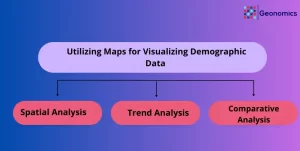
- Spatial Analysis: Maps can illustrate the spatial distribution of demographic variables such as population density, income levels, or education levels. This information is vital for urban planning, identifying areas of need, and targeting resources efficiently.
- Trend Analysis: By overlaying demographic data from different periods, maps can reveal trends and changes over time. This helps identify areas experiencing population growth or decline, enabling policymakers to adapt their strategies accordingly.
- Comparative Analysis: Maps facilitate the comparison of demographic data between different regions or countries. This allows researchers to identify variations, similarities, and disparities, leading to a deeper understanding of societal dynamics.
-
Utilizing Maps for Visualizing Demographic Data:
To truly comprehend population demographics, it is essential to explore some of the key trends and challenges associated with this field:
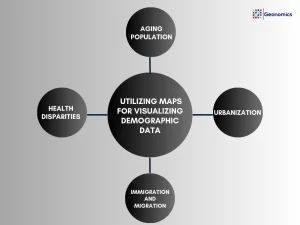
- Aging Population: Many countries are experiencing an increase in their elderly population due to declining birth rates and improved healthcare. This demographic shift poses challenges such as increased demand for healthcare services and a strain on pension systems.
- Urbanization: The world is witnessing a rapid increase in urban populations. Understanding the demographic characteristics of urban areas is crucial for efficient urban planning, resource allocation, and infrastructure development.
- Immigration and Migration: Global migration patterns significantly impact population demographics. Analyzing migration trends helps policymakers anticipate and address the needs of immigrant populations, promoting social integration and inclusive policies.
- Health Disparities: Demographic data helps identify health disparities among different populations. It enables researchers to address inequalities in healthcare access and outcomes, promoting equitable health policies and interventions.
-
The Future of Population Demographics:
As we look ahead, population demographics will continue to play a critical role in shaping societies. Here are a few aspects that will influence the future of population demographics:
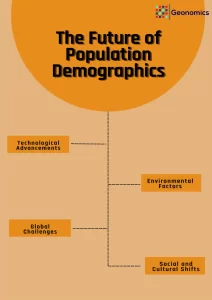
- Technological Advancements: With the advent of big data, artificial intelligence, and advanced analytics, the field of population demographics is evolving. These technologies enable more accurate and timely data collection, analysis, and prediction, providing policymakers and researchers with more robust tools to understand population dynamics.
- Environmental Factors: Environmental changes, such as climate change and natural disasters, can have a significant impact on population demographics. Rising sea levels, extreme weather events, and resource scarcity may lead to migration, displacement, and demographic shifts, necessitating a comprehensive understanding of these dynamics.
- Global Challenges: Global challenges, such as pandemics, economic crises, and political instability, have profound effects on population demographics. The COVID-19 pandemic, for instance, highlighted the vulnerabilities of certain population groups and disrupted demographic trends. Understanding these challenges and their demographic implications is crucial for effective crisis management and policymaking.
- Social and Cultural Shifts: Societal and cultural changes influence population demographics. Factors like changing family structures, gender roles, and attitudes toward migration impact population composition and behavior. Monitoring and analyzing these shifts will be essential for adapting policies and programs to meet evolving societal needs.
-
Ethical Considerations and Data Privacy:
While population demographic data offers invaluable insights, it is crucial to address ethical considerations and ensure data privacy. Collecting and analyzing demographic information must adhere to strict ethical guidelines, ensuring the protection of individual privacy and preventing any form of discrimination. It is vital to anonymize data, maintain confidentiality, and obtain informed consent from participants.
Furthermore, data transparency and accessibility are essential for promoting accountability and enabling stakeholders to engage in evidence-based decision-making. Open data initiatives and responsible data-sharing practices can foster collaboration and advance research in the field of population demographics while upholding privacy rights.
Conclusion:
Population demographics, through the use of demographic reports, maps and population demographic reports, provide a comprehensive understanding of a population’s composition, trends, and challenges. The insights gained from population demographics facilitate evidence-based policymaking, social interventions, and economic planning. As we move forward, leveraging advancements in technology, addressing environmental factors, recognizing global challenges, and considering ethical considerations will be crucial for the accurate and responsible analysis of population demographics. By doing so, we can better understand and address the complex dynamics of our ever-evolving societies.